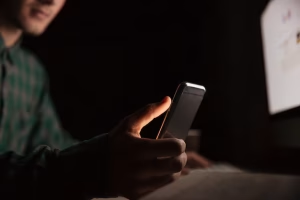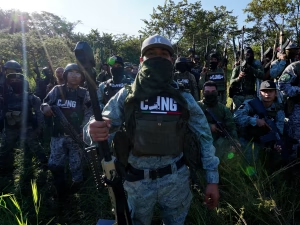What is the most interesting you case you ever tried?
Although most of my career has been spent working on intellectual property cases, I started my career in the United States Army Judge Advocate Generals Corp. Over the course of four years I tried 20 felony level cases. The most interesting case was United States of America v. Sgt. Breedan. My client, Sgt. Breedan, shot and killed his wife with a .44 magnum revolver in front of their 2-year-old son and two eyewitnesses. A .44 magnum revolver was, at the time, the most powerful handgun on earth. It had been made famous by Clint Eastwood in the movie Dirty Harry.
After leveling the .44 magnum at his wife and pulling the trigger, the eyewitnesses (fellow soldiers) screamed, “You need to make it look like an accident,” at which point Breedan emptied the shells from the revolver and threw them in his back yard. He then got out a gun cleaning kit and placed it and the revolver on a coffee table in the living room. All the while his wife is lying dead and bleeding on the floor and Sgt. Breedan was walking through the blood in his bare feet. He then calls 911. The pictures of the crime scene were gruesome. My defense was that Breedan did not think that when he pointed the gun at his wife and pulled the trigger that it would discharge. He testified that the six-shot revolver only had bullets in four of the six chambers and that he thought the hammer strike would fall on an empty chamber. He further testified that the reason he was pointing the gun at his wife in the first place is that she was waiving a knife at him after they had finished watching the movie Friday the 13th, and they “were just joking around.” There was, of course, some evidence of marital discord. But if there was no intent to kill her on his part, then he was not guilty of murder but only guilty of involuntary manslaughter, which carried merely a one-year sentence, instead of life.
I called several of Breedan’s fellow soldiers and portrayed him as a weapons expert. He could take apart and reassemble and M-16 blindfolded. In two minutes. Breedan was someone who would have known whether the gun was going to fire when he pulled the trigger. Breedan was charged with third degree murder--engaging in an inherently dangerous act – the act, of course, of pointing a gun you know to be loaded at someone’s head and pulling the trigger. Further complicating the case was the conflicting testimony from the eyewitnesses and Breedan about how many times he pulled the trigger before the gun discharged.
I remind my team that the only thing the jury will know about the case is what they see and hear inside the courtroom, which is a fraction of what the trial team knows.
When I got to closing argument I really needed to stress that Breedan did not think the gun would discharge when he pulled the trigger. That he was, in effect, pointing an empty gun at his wife. At the end of my closing I took the gun and held it up for the jury to see it wasn’t loaded and said “when Sgt. Breedan the weapons expert pointed this gun at his wife and pulled the trigger, his intent and state of mind was exactly as mine is now,” and I immediately in one fluid and rapid motion put the gun to the temple of my co-counsel’s head and pulled the trigger. Everyone in the courtroom gasped. I then set the gun down and said “nothing further.” They acquitted him of the murder charge.
What’s the most unexpected thing you’ve experienced at trial?
After we rested our case in the multimillion-dollar St. Clair v. Canon trial, opposing counsel handed us a document that had not been previously produced. A lot of bad things happened to Canon and its counsel after that.
This was a patent infringement case where we represented a company that owned some key patents on digital camera technology. Our inventors had worked on their invention during the evenings and on weekends while they kept their day jobs at a small California defense contractor named Mirage Systems. A little over a year earlier, we had won a $25 million verdict against Sony on the same patents. And prior to the Canon trial we had sued and settled with a number of other digital camera makers, including Olympus and Nikon. During the course of discovery, Canon developed a theory that our inventors’ employer, Mirage Systems, actually owned the patents pursuant to the employment agreement between the inventors and the company. Canon listed the CEO and president of Mirage on its trial witness list. We suspected that Canon must have made some type of deal with Mirage because it would not have been in Canon’s best interest to win our case based on an ownership defense only to then face a suit from Mirage. We repeatedly asked if Canon had a deal with Mirage. Canon insisted that it had complied with its discovery obligations and refused to produce any more documents. We asked again twice in the week before trial.
This brings us back to where the story started. After we rested our case, Canon’s lead counsel handed us an agreement between Canon and Mirage in which Mirage gave a covenant not to sue to Canon if Mirage ended up owning the patents. I immediately asked the judge (Joseph Farnan in Delaware) for a hearing and moved to strike Canon’s ownership defense. Judge Farnan grilled Canon’s lawyer for over half an hour. Canon’s lawyer insisted that they didn’t have to produce the document during discovery. When Judge Farnan asked why they were producing it now, Canon’s lawyer said he thought “Mr. Schutz might ask our witnesses if there was an agreement between Canon and Mirage.” During the course of grilling Canon’s lawyer, Judge Farnan said that he had five kids and they had told him a lot of whoppers over the years but nothing like this. Judge Farnan then dismissed the ownership defense and referred the discovery misconduct matter to a special master, who later found that Canon’s lawyers had committed discovery misconduct.
At trial we won a $34.7 million verdict. The 60-page special master’s report issued about a year later had recommended, among other things, that the pro hac vice admissions of Canon’s lawyers be revoked and that they be fined and pay our attorneys’ fees related to the special master’s investigation. Within days of the special master’s report we settled the case on confidential terms. Suffice it to say that failure to produce that document was an enormously costly mistake.
Trials never unfold exactly as you expect so you need to expect the unexpected. You need to ask the question, “What could go wrong here?” and come up with a response.
What does your trial prep routine consist of?
I remind my team that the only thing the jury will know about the case is what they see and hear inside the courtroom, which is a fraction of what the trial team knows. I then begin with a thorough review of the documentary evidence. Despite the enormous volume of documents produced in litigation, the actual documents admitted as exhibits in trial are a small fraction of that. I ask every member of the team to list the 50 best and 50 worst documents, and then we prepare how we will use the 50 best to our advantage and how we will defuse the 50 worst. I also often use mock trials and focus groups with the actual witnesses. This provides both preparation and feedback. The morning before the trial, I give my complete opening statement to the entire trial team and then we critique it and I modify it accordingly.
If you could give just one piece of advice to a lawyer on the eve of their first trial, what would it be?
Have a plan B. Trials never unfold exactly as you expect so you need to expect the unexpected. You need to ask the question, “What could go wrong here?” and come up with a response.
Partner
Chair of the Executive Board
www.robinskaplan.com/lawyers/ronald-schutz
Ronald J. Schutz is the Chair of Robins Kaplan LLP’s Executive Board and an experienced trial attorney. Mr. Schutz is a Fellow of the American College of Trial Lawyers and is listed in The Best Lawyers in America. He has also been named by Lawdragon as one of the 500 Leading Lawyers in America and by Intellectual Asset Magazine as one of the 300 Leading IP Strategists in the world. In 2008, the National Law Journal named Mr. Schutz to its annual list of the Top 10 Winning Litigators in the United States.
Mr. Schutz has extensive trial experience. Among his significant jury verdicts are the following: $110 million (Fonar v. GE); $66 million (Grantley v. Clear Channel); $35 million (St. Clair v. Canon); $25 million (St. Clair v. Sony); $8 Million (Personal Audio v. Apple); and $6 million (with settlement of $13.5 million after verdict) Megdal v. La-Z-Boy.
Robins Kaplan is among the nation’s premier trial law firms, with more than 250 attorneys in eight major cities. Covering a wide range of practice areas, including intellectual property, business litigation, personal injury, medical malpractice, mass tort, antitrust, and insurance, Robins Kaplan achieves landmark triumphs and drives thousands of other cases to resolution before they ever hit the courtroom or the front page.




















